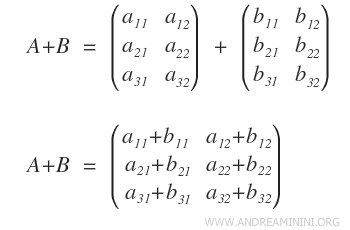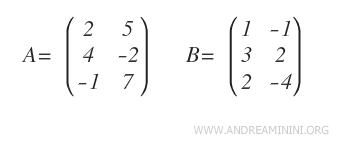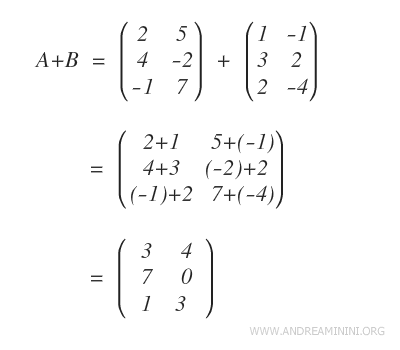Matrix addition
How to Add Two Matrices
To add two matrices, A and B, with the same dimensions (m rows by n columns), simply add each pair of corresponding elements (aij + bij) to form a new matrix.

Can you add matrices with different dimensions? No, you cannot add matrices that have a different number of rows (m) or columns (n).
Example of Matrix Addition
In this example, we have two matrices, A and B.

Since both matrices have the same dimensions (3x2), we can add them to get matrix A + B.
The resulting matrix, A + B, is created by adding each corresponding element from matrices A and B.

This gives us the final sum matrix.
Properties of Matrix Addition
Matrix addition follows these key properties:
- Associativity
For any three matrices, the sum A + (B + C) is the same as (A + B) + C. - Commutativity
For any two matrices, A + B equals B + A.

- Existence of a Neutral Element
In matrix addition, there is a neutral element represented by matrix O. Adding O to any matrix A leaves A unchanged.

Note: The neutral matrix is an m x n matrix where every element is zero.
- Existence of an Opposite Element
For every matrix A, there exists an opposite matrix, -A, such that A + (-A) results in the zero matrix (O).

